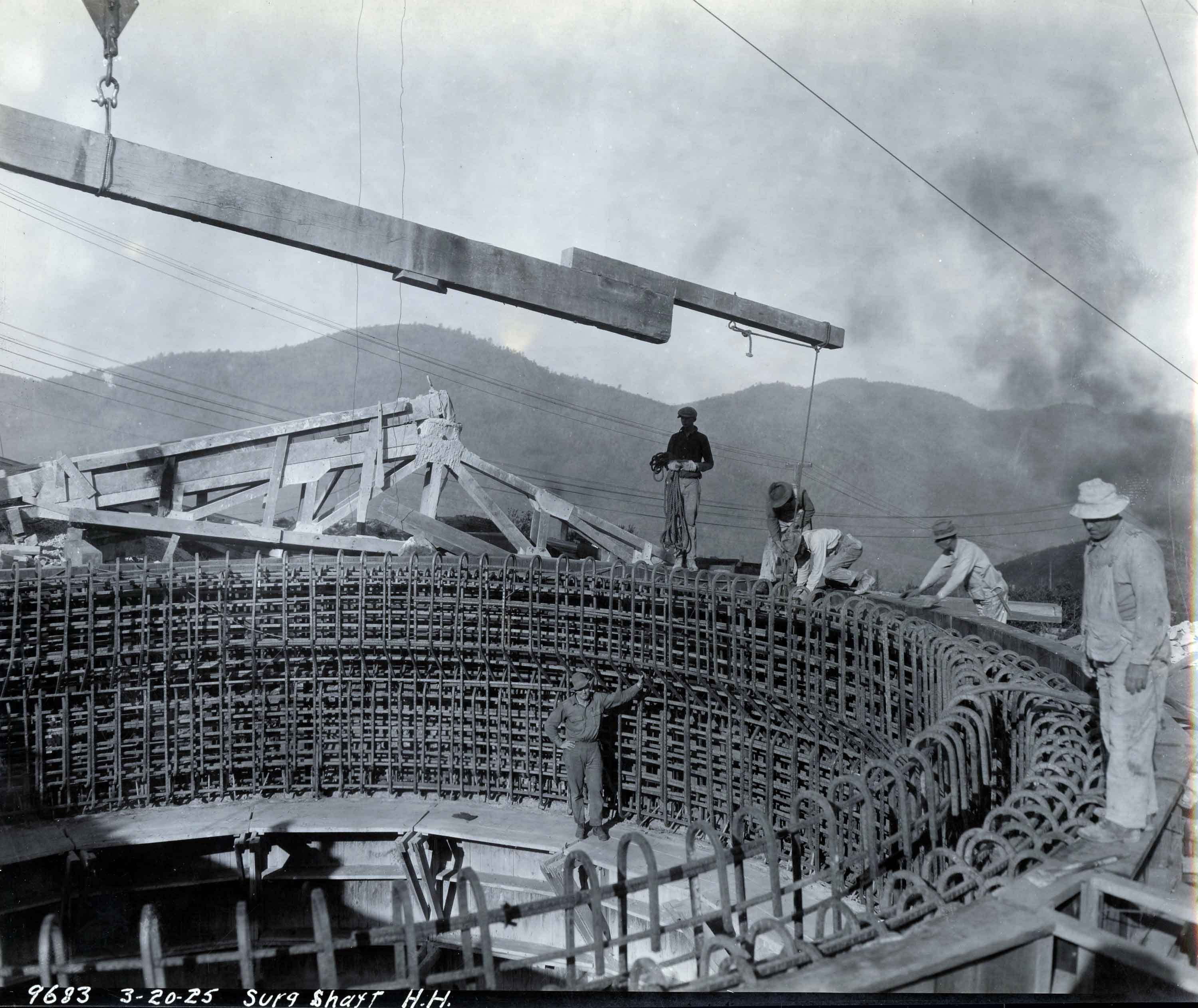 Workers on the surge shaft, March 23, 1925. Courtesy of the University of California, Riverside.
Workers on the surge shaft, March 23, 1925. Courtesy of the University of California, Riverside.
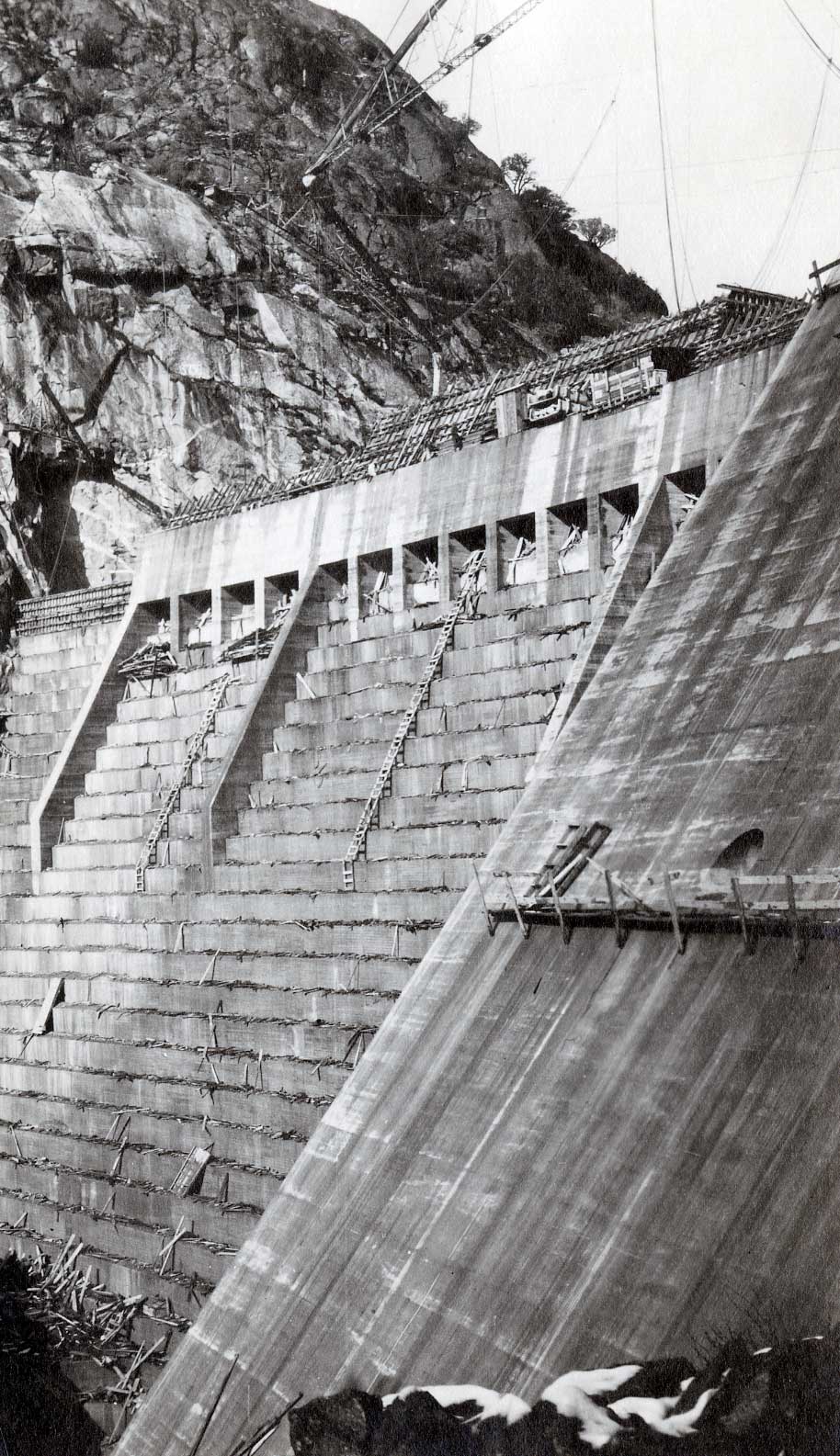 Dam nearing completion.
Dam nearing completion.
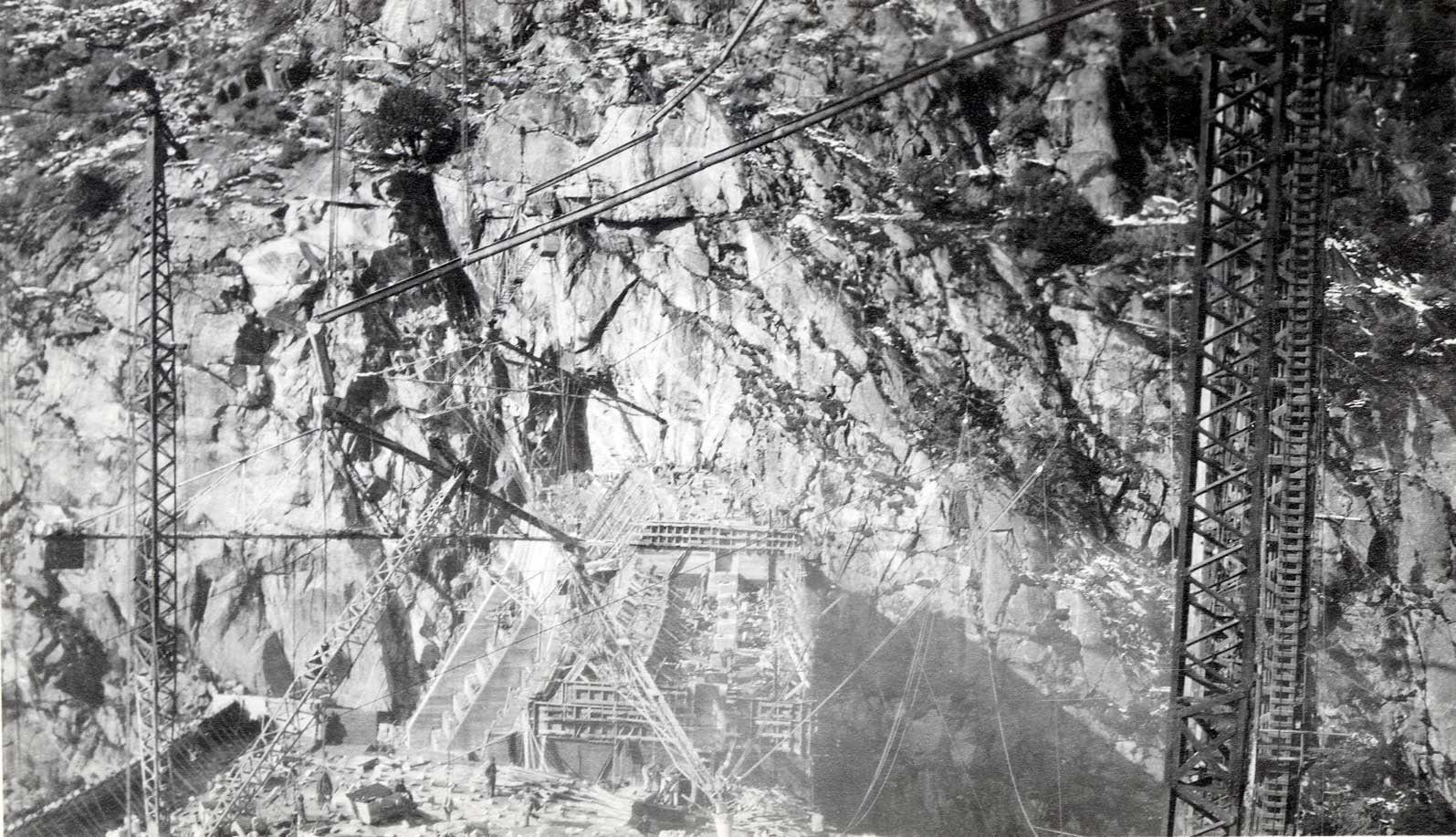
San Francisco City began accepting bids for the construction of Hetch Hetchy in 1915
and on August 1, 1919, the contract was awarded to the Utah Construction Company for a total bid of $5,370,808.50. Today, that would be an estimated $162,555,229.82. With a system of cranes, pulleys, and numerous other tools, the Hetch Hetchy Dam was a concrete marvel. It used hydropower and natural gravity-pulling pipes to generate power and sent water through various other dams and power plants, giving San Francisco its much-needed fresh water supply.
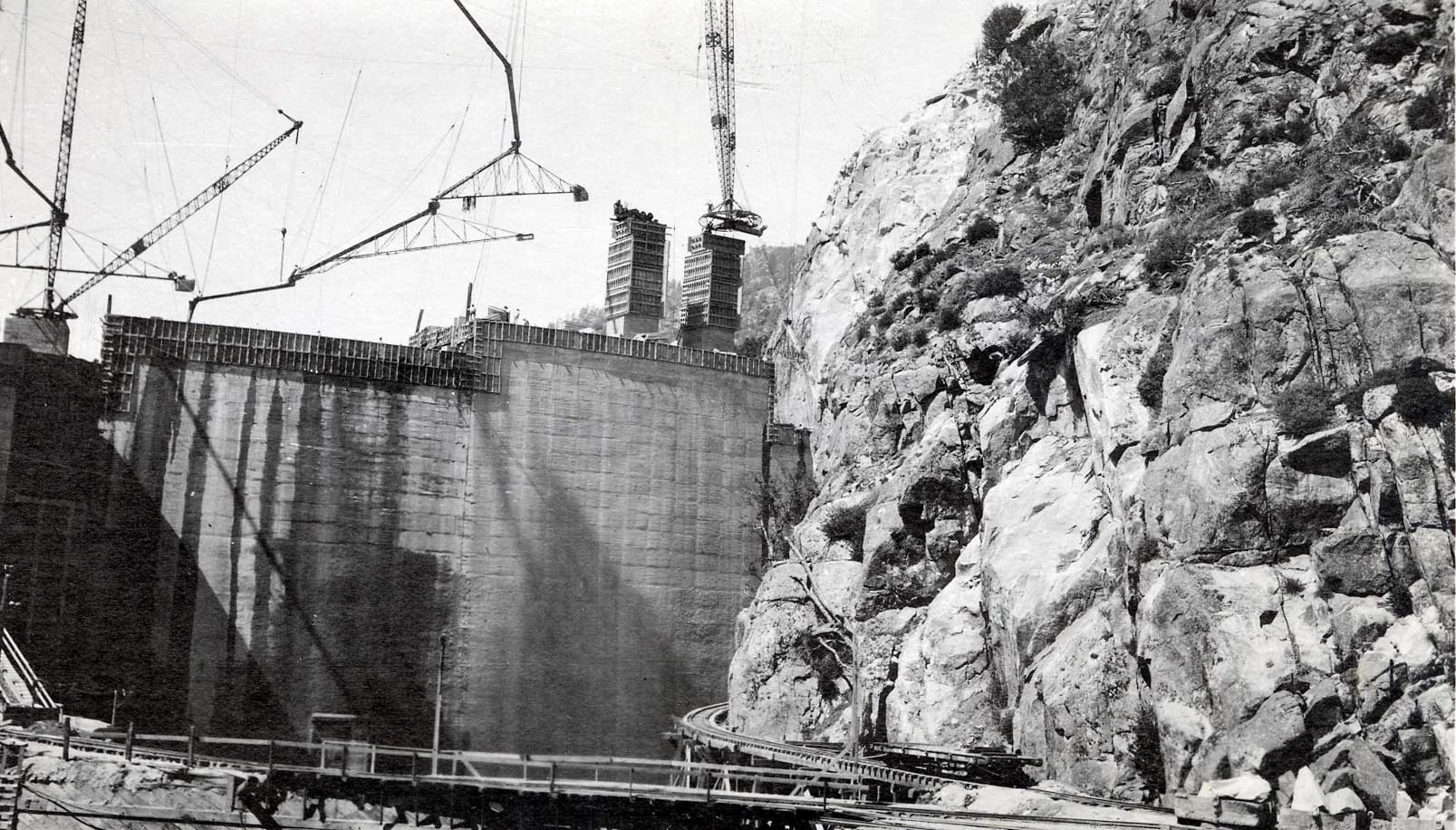
Some of the construction features of interest are the use of bulk cement, the success in developing porous concrete blocks for drainage wells, the use of a 350 ft. concrete tower for the spouting system, an effective system of aligning forms and the method of concreting around large valves to prevent forcing them out of shape. The dam was an arched gravity dam with a radius of 700 feet. The initial height was 226.5 ft. above the stream bed. Over 2,000 cubic yards of concrete were poured a day during construction with a record of 41,178 in a single month.
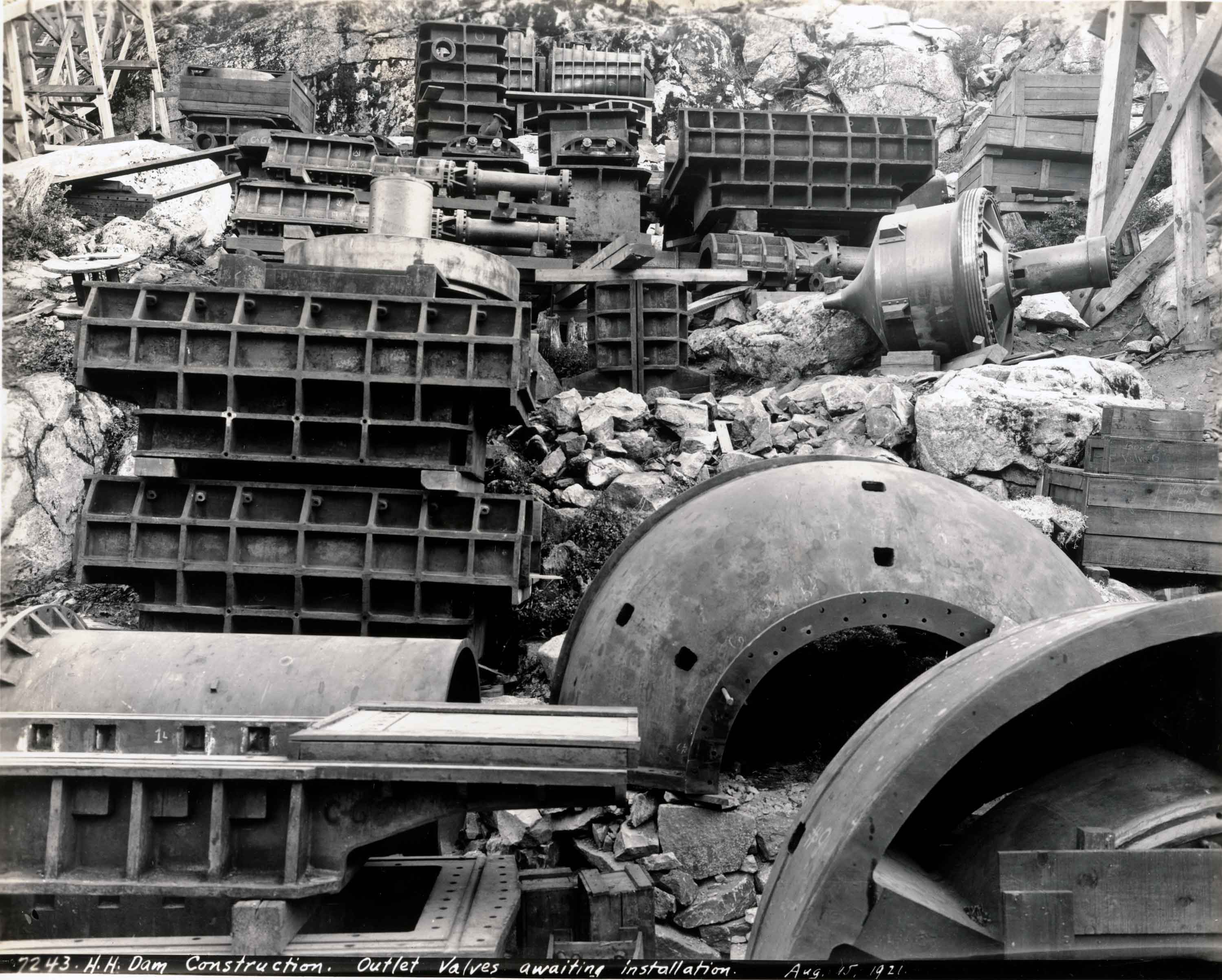 Outlet valves awaiting installation, August 15, 1921. Courtesy of the University of California, Berkeley, Bancroft Library.
Outlet valves awaiting installation, August 15, 1921. Courtesy of the University of California, Berkeley, Bancroft Library.
The Dam itself was completed in May 1923, though San Francisco would not receive its fresh water until 1934 with the rest of the project’s completion. The Hetch Hetchy Reservoir would be the second tallest dam at this time, standing at 430 feet and 900 feet wide. It held 66 billion gallons of water and was the single largest manmade structure on the West Coast.
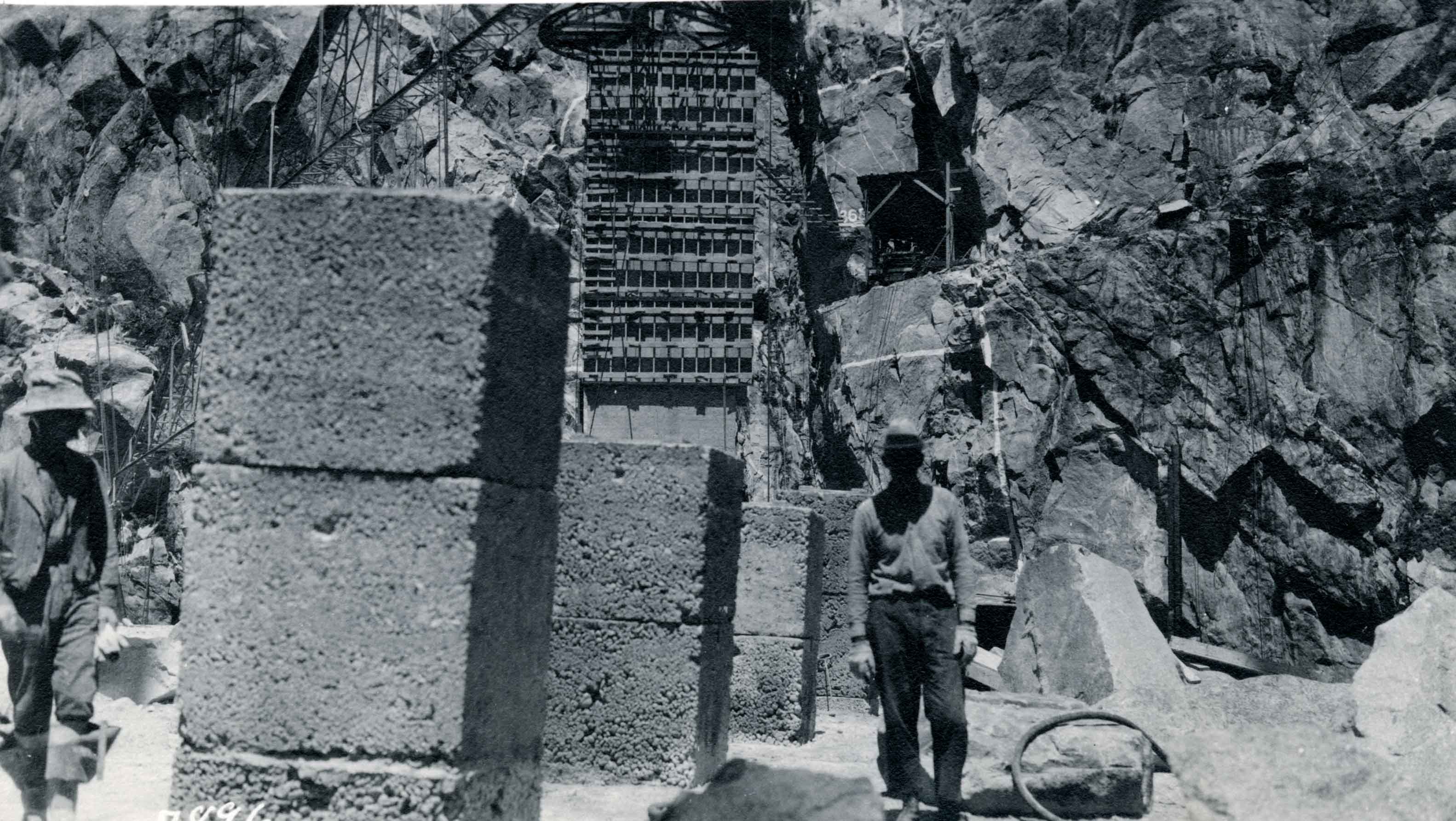 Close view of drainage wells of porous concrete blocks, June 1922. Courtesy of San Francisco Public Library.
Close view of drainage wells of porous concrete blocks, June 1922. Courtesy of San Francisco Public Library.
